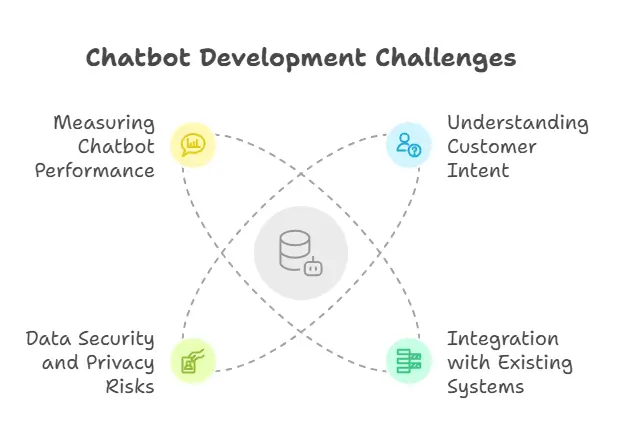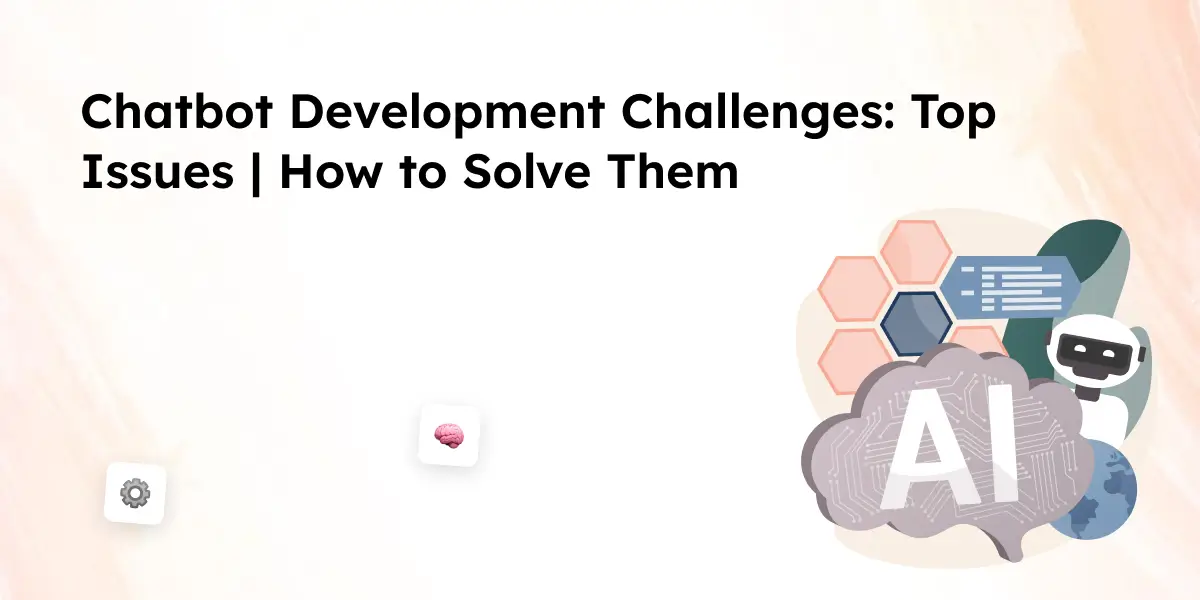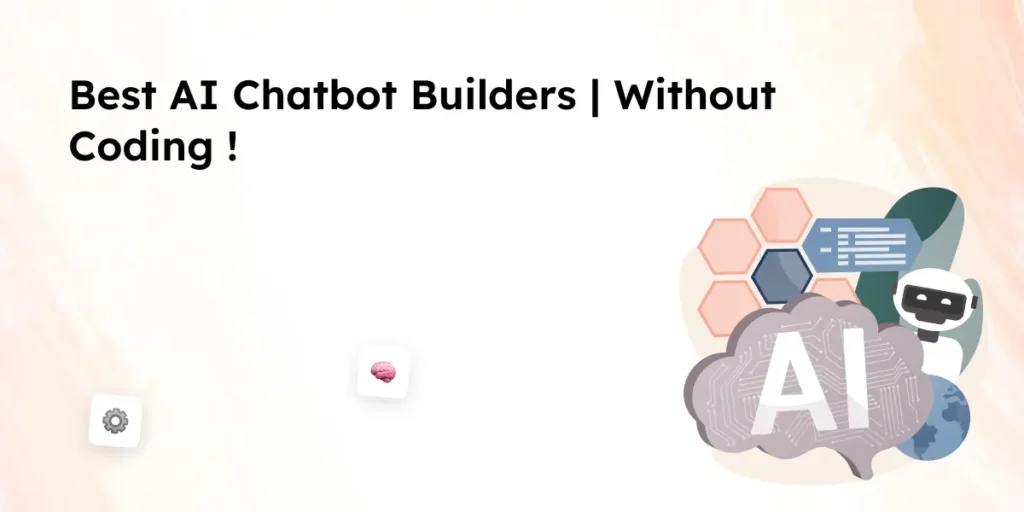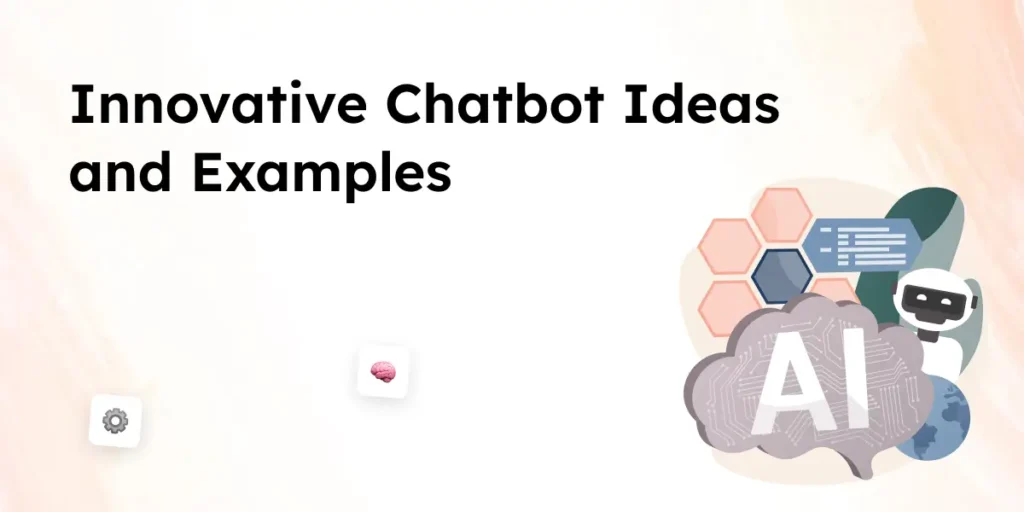Chatbots are being used across industries to streamline customer service and improve response times. Businesses are increasingly turning to AI-powered chatbots to handle repetitive queries, reduce support costs, and enhance user experience. However, developing a chatbot isn’t always straightforward.
Chatbot implementation comes with a unique set of challenges that need to be addressed to ensure success. A chatbot may struggle to understand user intent, integrate with existing systems, maintain data security, or provide accurate performance tracking.
This article will explore the top four chatbot challenges and how to solve them. If you’re looking to improve customer interactions with an AI chatbot, these solutions will help you build a smarter, more effective chatbot experience.
The Current State of AI Chatbots in Customer Service
The chatbot market has grown rapidly as businesses seek ways to automate customer interactions. AI chatbots are becoming more advanced, allowing companies to provide personalized recommendations and quicker resolutions to customer queries.
Many businesses use chatbots to handle simple tasks, such as answering frequently asked questions or processing basic requests. Chatbots often handle sensitive customer data, making security a priority. Despite these benefits, chatbots often struggle with complex requests, leading to frustration when a chatbot doesn’t fully understand the query.
Here are some key trends shaping the current state of AI chatbots in customer service:
- Chatbots can handle repetitive inquiries, freeing up human agents for more complex issues.
- AI-powered chatbots are improving through advancements in natural language processing and conversational AI.
- Businesses are integrating chatbots into messaging apps, websites, and customer support platforms.
- Regulations like GDPR are driving the need for secure chatbot implementation and data protection.
- Companies are tracking key performance indicators to measure chatbot effectiveness and refine responses over time.
Understanding the current state of AI chatbots helps businesses plan for the future of chatbots, ensuring they stay ahead of technological advancements while addressing chatbot challenges in customer service.
Top 4 Chatbot Development Challenges and How to Solve

Chatbot Challenge 1: Understanding Customer Intent
Why It’s a Problem
One of the biggest chatbot challenges is accurately interpreting customer intent. Chatbots often struggle with complex queries, slang, and contextual meaning. If a chatbot responds incorrectly, it can harm customer satisfaction.
Natural language processing plays a key role in chatbot development, but many chatbots may struggle with recognizing subtle differences in user input. A chatbot must be able to understand intent across different languages and communication styles to improve customer experience.
How to Solve It
To enhance chatbot capabilities, businesses should:
- Train chatbots using real customer interactions to improve their ability to recognize user intent
- Use conversational AI models that can analyze sentiment and context more accurately
- Keep the chatbot knowledge base updated to ensure accurate chatbot responses
- Ensure your chatbot continues learning from previous conversations to refine its accuracy
Advancements in AI models and natural language processing are making intelligent chatbots more effective at handling complex conversations. By improving how a chatbot generates responses, businesses can provide a better user experience.
Chatbot Challenge 2: Integration with Existing Systems
Why It’s a Problem
Integrating chatbots into existing customer service platforms can be a challenge. Many chatbot software options require customization to work with CRMs, ticketing systems, and databases. If chatbot implementation isn’t seamless, it can create workflow disruptions.
How to Solve It
To successfully integrate chatbots, businesses should:
- Choose chatbot software that works with platforms like Zendesk, Salesforce, or Freshdesk
- Use APIs and webhooks to sync chatbot interactions with databases in real time
- Work closely with software development teams to ensure smooth integration
- Keep your chatbot updated to maintain compatibility with new technologies
Integrating chatbots effectively can improve chatbot experience by reducing response times and making customer interactions more efficient.
Chatbot Challenge 3: Data Security and Privacy Risks
Why It’s a Problem
Chatbots often handle sensitive customer information, making data security a top concern. Regulations like GDPR require businesses to protect user data. A chatbot generates data with every interaction, so security breaches can be costly.
How to Solve It
To keep chatbot data secure, businesses should:
- Implement encryption to protect chatbot-generated data
- Regularly audit chatbot security measures to prevent vulnerabilities
- Comply with data protection laws like GDPR and the AI EU Act
- Ensure that chatbot responses do not expose sensitive customer data
By addressing these challenges, companies can build secure, AI-powered chatbots that protect customer information.
Chatbot Challenge 4: Measuring Chatbot Performance
Why It’s a Problem
Many businesses struggle to track key performance indicators that show how well a chatbot works. Without clear data, chatbot improvements become difficult.
How to Solve It
To track chatbot success, businesses should:
- Define key performance indicators like resolution time, customer satisfaction scores, and ticket deflection rates
- Use analytics tools to measure chatbot interactions and user experience
- Continuously update and refine chatbot responses based on performance data
Using AI to analyze chatbot performance helps businesses optimize chatbot technology for better customer service outcomes.
Many chatbot challenges can be avoided by implementing AI-driven chatbot strategies. Read our expert insights.
The Future of AI Chatbot Development
AI chatbot development is advancing quickly, helping businesses automate interactions, improve efficiency, and reduce dependence on human agents. Future chatbots will focus on better user experiences, stronger security, and seamless integration with existing systems.
More Human-Like Conversations
AI models are becoming more sophisticated, enabling chatbots to understand customer intent more accurately. With advancements in natural language processing and conversational AI, chatbots will be able to engage in more natural and meaningful conversations.
Personalized and Context-Aware Responses
Chatbots are shifting from simple rule-based interactions to intelligent chatbot systems that offer personalized recommendations. By analyzing past customer interactions, AI chatbots can deliver context-aware responses that enhance customer experience.
Integration with Omnichannel Support
Chatbots are being used across multiple platforms, including messaging apps, websites, and voice assistants. Future chatbot implementation will focus on seamless cross-platform integration, ensuring a consistent user experience regardless of where customers engage.
Enhanced Security and Compliance
With chatbots often handling sensitive customer data, businesses will need to prioritize compliance with regulations like GDPR and the AI EU Act. Future AI-powered chatbots will implement stronger encryption, access controls, and automated compliance measures to protect customer data.
AI-Driven Self-Learning and Adaptation
Traditional chatbots may struggle with new or unexpected queries, but AI-powered chatbots of the future will continuously learn from interactions. This advancement will improve chatbot responses, making them more adaptable to changing customer needs.
Conclusion
Overcoming these challenges is key to making AI chatbots more effective for businesses. From improving natural language processing to integrating chatbots with existing systems, businesses must take a strategic approach to chatbot implementation.
By addressing these chatbot challenges, companies can improve customer experience, increase efficiency, and ensure chatbot interactions are more helpful. Whether using a chatbot for customer service or automating other business tasks, an intelligent chatbot can bring significant benefits when developed correctly.
FAQs
What is the biggest challenge in chatbot development?
One of the key challenges in chatbot development is understanding customer queries accurately. Chatbots often struggle with interpreting complex user intent, which can affect customer interactions.
How can I make my AI chatbot understand customer queries better?
Using AI models and training chatbots with real customer interactions can help them understand queries more accurately. Natural language processing improvements also enhance chatbot capabilities.
What security measures should I take when implementing a chatbot?
To ensure chatbot security, businesses should use encryption, comply with regulations like GDPR, and conduct regular audits to prevent security breaches.
How do I measure the success of my AI chatbot?
Tracking key performance indicators such as customer satisfaction scores, resolution times, and chatbot interactions helps measure chatbot effectiveness.
Will chatbots replace human agents in the future?
While chatbots can handle many tasks, there will still be times when chatbots need human agent support. The future of chatbots will likely focus on collaboration between AI and human agents.



